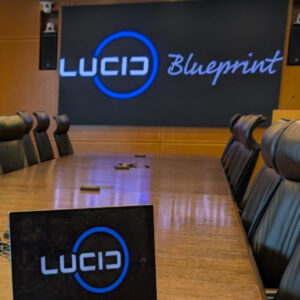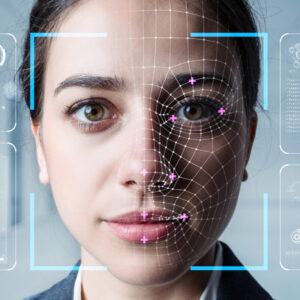09-07-2025
Reducing Complexity in System Design and Setup
In today’s rapidly evolving technological landscape, organisations face the challenge of managing diverse audiovisual (AV) systems across multiple locations. This diversity often leads to increased complexity, higher maintenance costs and inconsistent user experiences. AV standardisation emerges as a strategic solution to these challenges, offering a unified approach to system design and setup that enhances efficiency and scalability.
Understanding AV Standardisation
AV standardisation involves adopting consistent protocols, equipment and design principles across all AV installations within an organisation. By aligning with global standards in AV, such as those developed by AVIXA, organisations can ensure interoperability, simplify maintenance and provide a consistent user experience.
Lucid Blueprint
At Lucid, we have developed Blueprint, an advanced AV software platform that delivers consistent, organisation-wide standardisation, without compromising on individual room requirements. Blueprint brings all key room functions together into a single, intuitive interface, giving you complete control at your fingertips. Designed to simplify operations and boost productivity, it ensures a seamless experience across your entire workspace.
Book a demo today to see how Blueprint can transform your AV strategy.
Key Benefits of AV Standardisation
- Simplified System Design and Deployment
Standardised AV systems streamline the design process by providing a clear framework for equipment selection and integration. This approach reduces the time and resources required for system deployment, allowing for quicker implementation across various locations.
- Enhanced User Experience
Consistency in AV systems ensures that users encounter familiar interfaces and functionalities, regardless of the location. This familiarity reduces the learning curve, minimises user errors and enhances overall satisfaction.
- Improved Maintenance and Support
With standardised systems, maintenance becomes more straightforward, as technicians can apply uniform procedures and solutions across different setups. This uniformity leads to faster issue resolution and reduced downtime.
- Cost Efficiency
Standardisation enables bulk purchasing of equipment and components, leading to cost savings. Additionally, streamlined maintenance and reduced training requirements contribute to lower operational expenses.
- Scalability and Future-Proofing
Adopting global standards in AV ensures that systems are compatible with emerging technologies, facilitating seamless upgrades and expansions. This adaptability is crucial for organisations aiming to scale their operations efficiently.
Lucid’s Approach to AV Standardisation
At Lucid, we specialise in designing and implementing AV solutions that adhere to global standards. Our approach focuses on:
- System Design Consistency – design is central to achieving standardisation. We ensure consistency in layouts, specifications and functionality to deliver a reliable and repeatable AV experience across every site.
- Expert Integration – ensuring seamless integration of AV components to deliver reliable and high-performing systems.
- Client-Led Flexibility – while we champion standardisation, we also work closely with clients to reflect specific preferences and operational needs within a consistent system architecture.
- Comprehensive Training – providing training programmes to equip users with the knowledge to operate standardised systems effectively.
- Ongoing Support – offering continuous support to maintain system performance and address any issues promptly.
By embracing AV standardisation, Lucid helps organisations reduce complexity in system design and setup, leading to enhanced operational efficiency and user satisfaction. Please get in touch with us today to find out how we can streamline your AV infrastructure.





